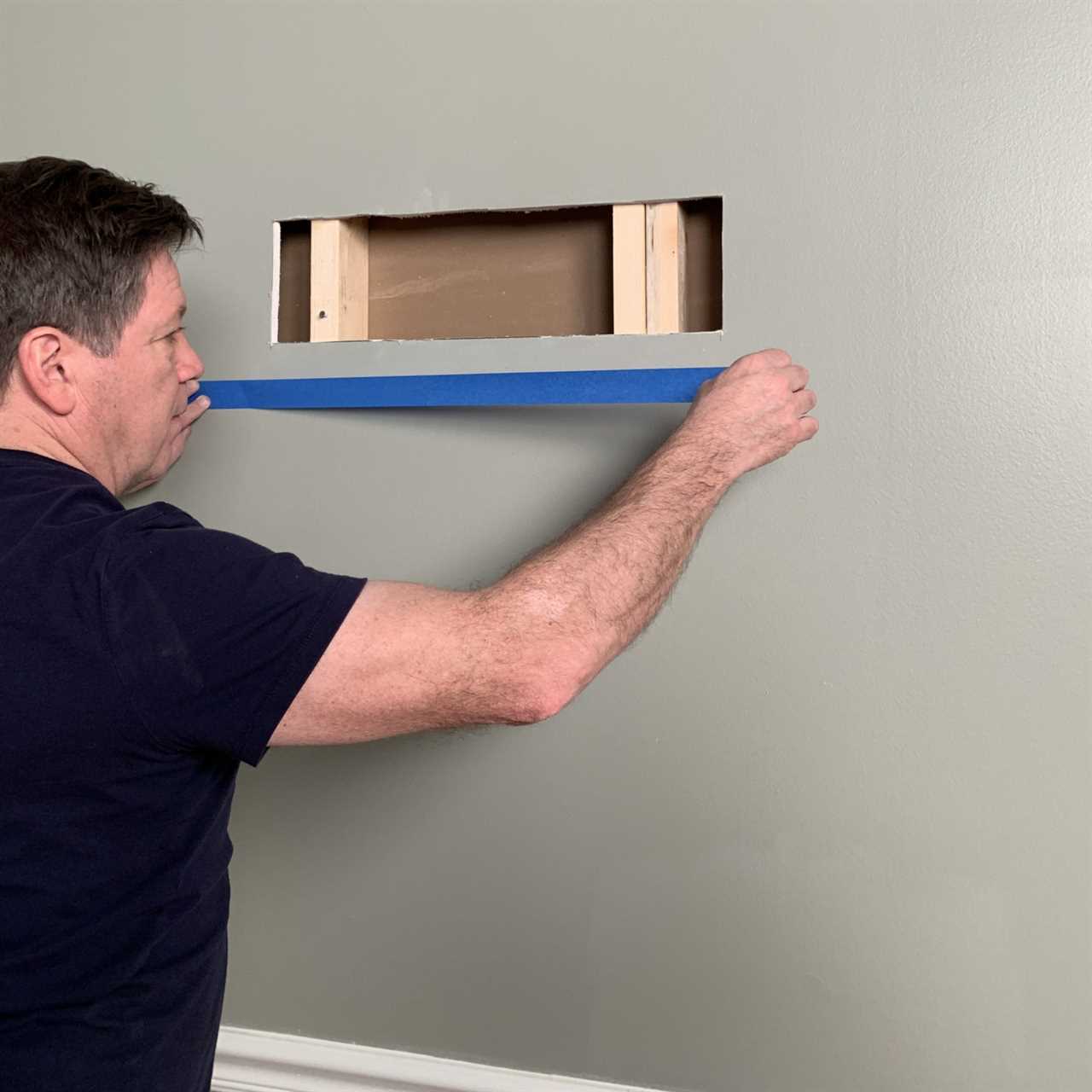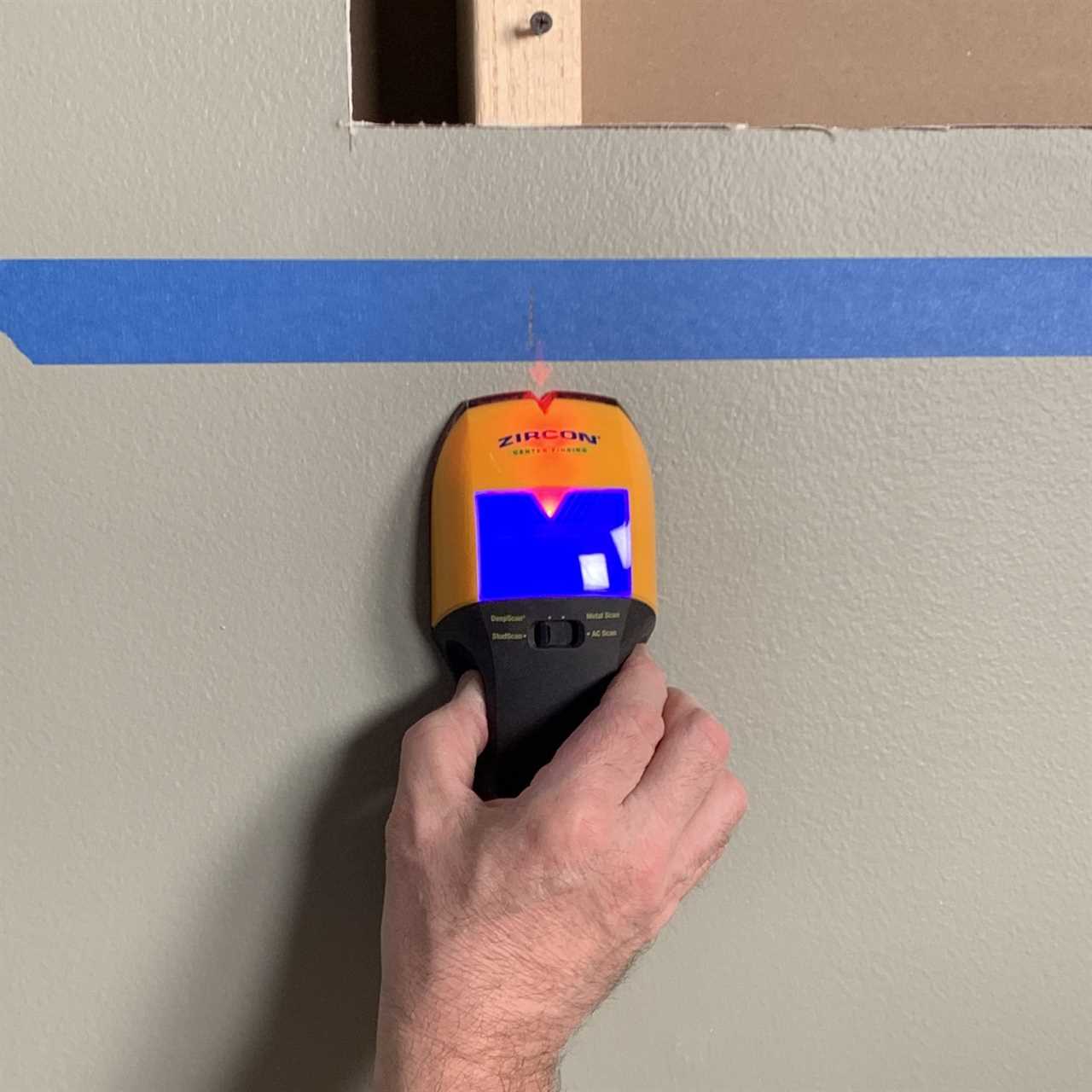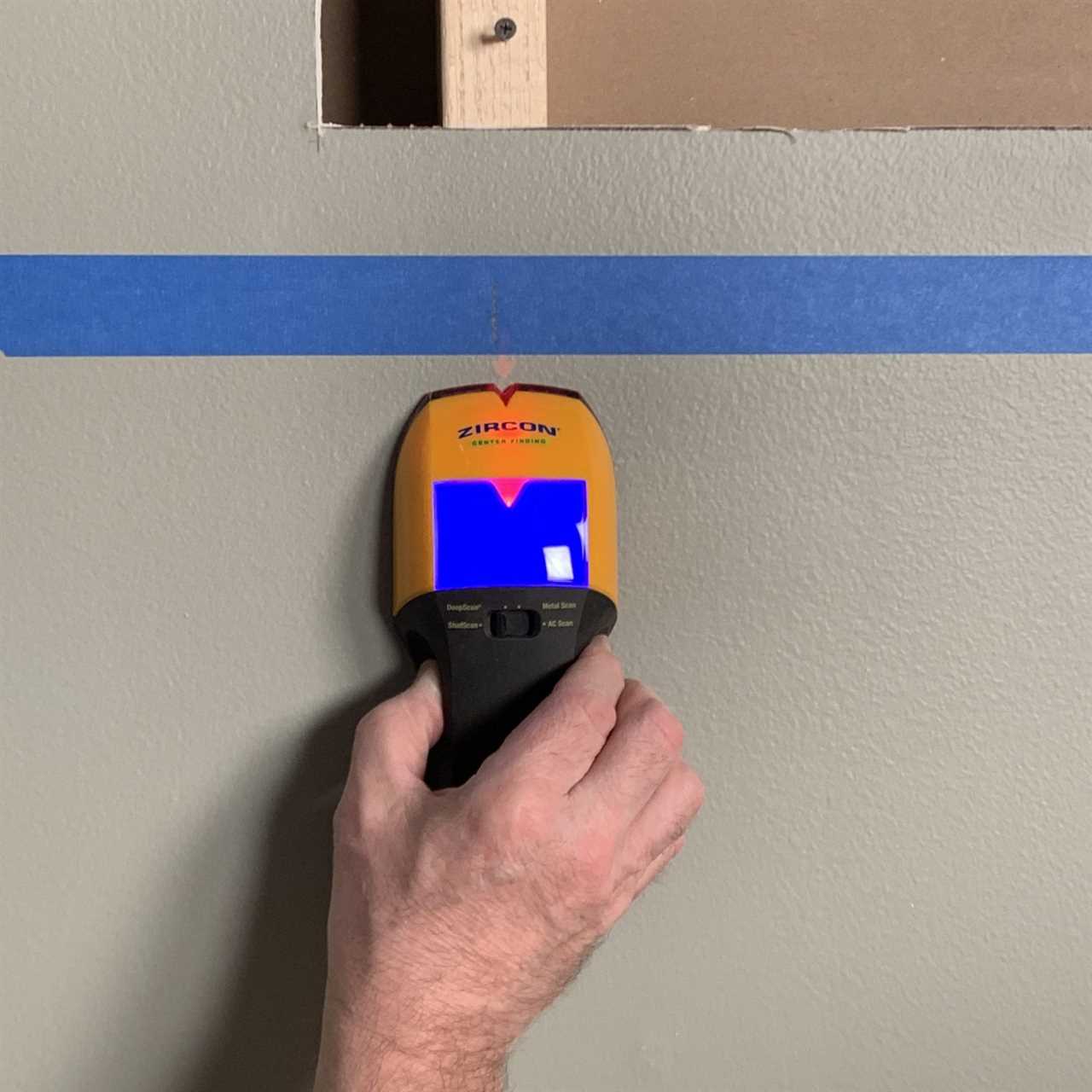Stud Finder Basics
There are two types of stud finders, magnetic and electronic. A magnetic stud finder, as the name suggests, employs a magnet to locate drywall screws or nails hidden behind the mud and paint. An electronic stud finder operates on batteries and detects the density in the wall.
You’ll find several styles and brands of stud finders on the market. Some can even detect plumbing and electrical wiring in your wall, like the Family Handyman Approved Zircon HD900.

Using an Electronic Stud Finder
- Note: Electronic stud finders detect either the outside edge of the stud or the center of the stud. It’s extremely important to determine which device you have before proceeding.
- Begin by sticking a piece of painter’s tape in the area where you want to hang your item.

- To locate a stud without pressing the button, hold the stud finder against the wall keeping it upright. Then press and hold the button, slowly moving the device in one direction, until it detects a stud and beeps. Then stop.
- Make a pencil mark on the tape at the edge or center of the stud, depending whether your stud finder locates the center of the stud or the edge. Then release the button.

- Place the device about six inches past your mark. Again, holding it firmly against the wall, press and hold the button. Slowly move it in the opposite direction toward your mark until it detects the other edge or center of the stud. Then stop.
- Make another pencil mark on the tape at the other edge or center of the stud and release the button.
- The true center of the stud is between the two marks you just made.
- Note: If an error code appears on the device, it may be you’re pressing the button too soon or moving the stud finder too fast.
- Some multi-scanners have four detection modes: studs, deep studs, metal and live electrical wiring.

Did you miss our previous article...
https://rsssuperfeeds.com/life-hacks/the-portable-campfire-lets-you-enjoy-a-fire-almost-anywhere






